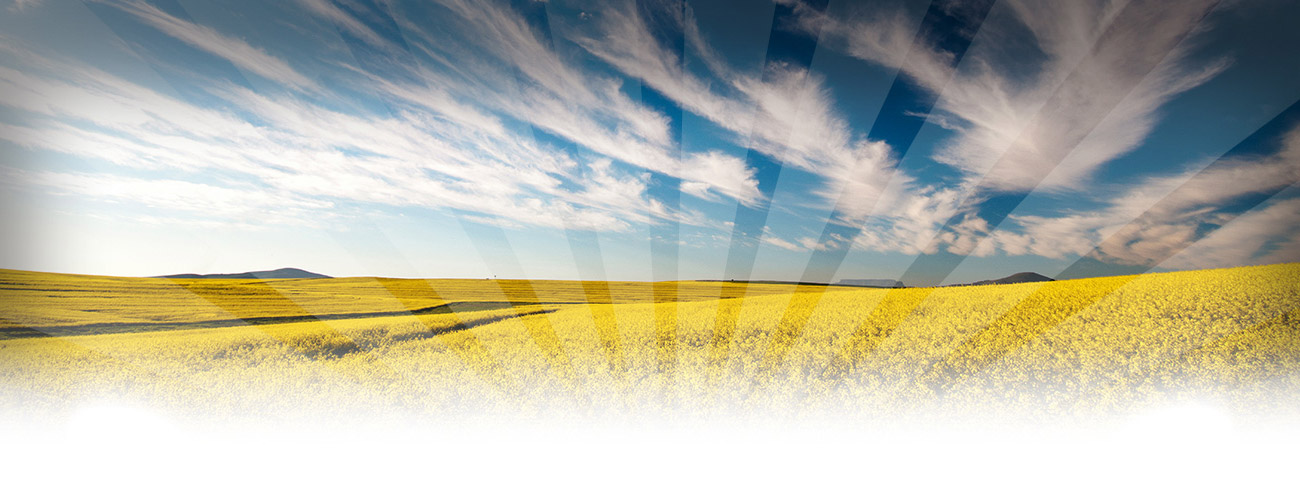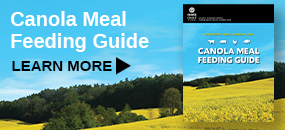

June 2023
By ESSI EVANS, Ph.D., E&E Technical Advisory Services
When compared to other vegetable protein sources, canola meal is proven to have measurable advantages as a protein for cows. It’s a well-researched feed ingredient that consistently provides value on the dairy. But canola’s value in dairy rations has historically been underestimated. Here are four benefits of canola meal that you may not have known:
Four recent studies have proven that early-lactation diets containing canola meal provide greater milk yield when compared to diets containing soybean meal.1-4 In all of the studies, the diets were formulated to the same nutritional specifications. The authors concluded that the amino acid balance was superior for the canola meal diets.
Proteins are made up of amino acids. If an amino acid is limiting in an ingredient, then more protein must be given to ensure a sufficient supply. Because the amino acid profile of canola meal is so similar to milk protein, the cow can utilize canola meal very efficiently. This efficient use of protein is further verified by the often-lower milk urea nitrogen (MUN) value found in the meal. High MUN indicates that cows are receiving too much protein, or the protein in the diet is not being used efficiently.
Canola meal has less protein than soybean meal. However, a greater part of the canola meal protein is in the form of rumen undegraded protein (RUP), or bypass protein. Although the digestibility of the RUP is lower for canola meal than soybean meal, the amount that is available to the cow is similar.
So, a pound of canola meal yields as much available protein to the cow; and, back to Fact 2, the available protein that is provided is closely matched to what the cow needs to support milk production.
| Canola Meal | Soybean Meal | |
| Crude Protein (CP), of dry matter, % | 42.0 | 49.9 |
| RUP, % of CP 2 | 53.6 | 40.0 |
| RUP, % of meal | 22.5 | 20.0 |
| RUP Digestibility, % | 81.0 | 93.0 |
| Available RUP, % of the meal | 18.2 | 18.6 |
There are now several feed additives that can be used to reduce methane emissions by cows. In addition, some ingredients naturally help reduce rumen methane emissions, and recent research has shown that canola meal is one that supports lower methane emissions, while at the same time, supporting greater milk yield than soybean meal.5
In a feeding trial, diets were formulated to the same ingredient and nutrient specifications, with canola meal incrementally replacing soybean meal and soybean hulls. As the level of canola meal in the diet increased, methane output decreased, demonstrating canola meal’s ability to improve sustainability.5
| Diet canola meal, % | 0 | 8 | 16 | 24 |
| Energy-corrected milk, lbs/day | 92.6 | 95.0 | 95.9 | 98.6 |
| Dry-matter intake | 58.7 | 61.2 | 61.6 | 62.9 |
| Methane, g/day | 489 | 475 | 463 | 461 |
| Methane, g/lb dry-matter intake | 8.6 | 8.1 | 7.8 | 7.6 |
| Methane, g/lb energy-corrected milk | 5.3 | 5.0 | 4.8 | 4.7 |
1 Moore, S.A.E. and Kalscheur K.J. 2016. Canola meal in dairy cow diets during early lactation increases production compared with soybean meal. Journal of Animal Science, 94(Suppl 1), p.731.
2Gauthier, H., Swanepoel, N. and Robinson, P.H., 2019. Impacts of incremental substitution of soybean meal for canola meal in lactating dairy cow diets containing a constant base level of corn derived dried distillers’ grains with solubles. Animal Feed Science and Technology, 252, pp.51-63.
3Swanepoel, N., Robinson, P.H. and Conley, A., 2020. Impacts of substitution of canola meal with soybean meal, with and without ruminally protected methionine, on production, reproduction and health of early lactation multiparous Holstein cows through 160 days in milk. Animal Feed Science and Technology, 264, p.114494.
4Kuehnl, J.M. and Kalscheur, K.F., 2021. Production and temporal plasma metabolite effects of soybean meal versus canola meal fed to dairy cows during the transition period and early lactation. Journal of Dairy Science 104(Supplement 1), pp.23.
5Benchar C, Hassanat F, Beauchemin KA, et al. Diet supplementation with canola meal improves milk production, reduces enteric methane emissions, and shifts nitrogen excretion from urine to feces in dairy cows. J Dairy Sci 2o21; 104(9):9645–9663.


